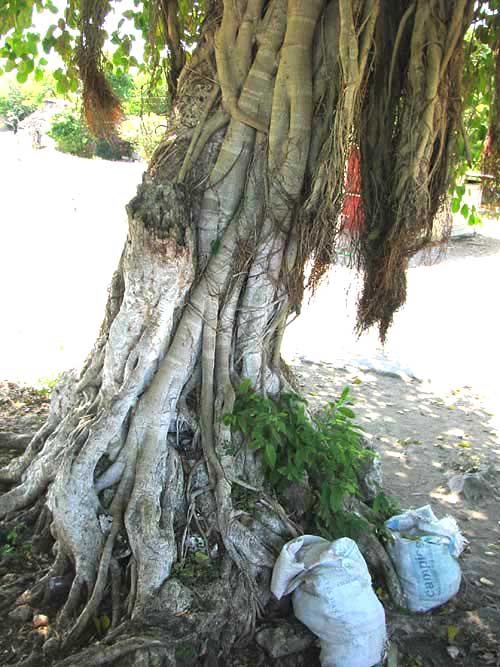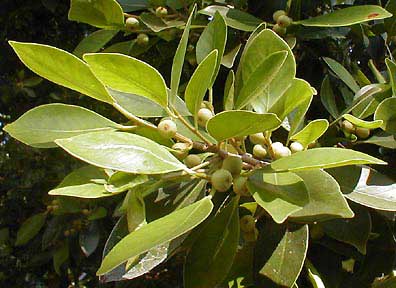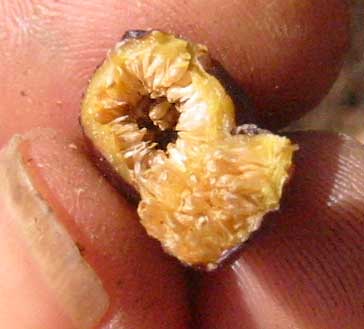

Many species of the fig-tree genus Ficus are regarded as strangler figs. We think of fig trees as having "fig-shaped leaves," meaning with a deep lobe on each side of the leaf, and of figs as being pear-shaped. However, that's the Old World fig. Leaves and figs of our many American fig species usually look something like those below:

Not all American figs are "stranglers," but the most eye-catching ad interesting are. Strangler figs are those which sometimes "strangle" their host trees. The strangling works like this:

Tiny fig seeds from inside fig fruiting bodies such as the opened one shown above are deposited on a "host tree" or maybe atop a Maya ruin. The seed germinates, sprouts a shoot that will become a new tree, and issues roots that dangle to the forest floor or creep down the tree's trunk or maybe snake through cracks between a Maya ruin's stones.
The idea is to get to the ground where water and nutrients can be attained. Meanwhile, above, the shoot grows into a small tree, and maybe eventually a big one, even overtopping the host tree. The fig is not a parasite, for it robs nothing from its host's body. However, when it lives on a tree's limbs, it's an epiphyte -- a plant living on another plant.
Eventually many of the growing fig's roots reach the ground. They enlarge and merge with one another. If the roots encircle a tree trunk sometimes they form a cylinder around it. Once the fig is shading its host tree and taking much water from it, the host may die. It is "strangled" by the strangler fig. Strangler figs live atop ruins, old hacienda walls, or just on the forest floor. You don't need to have strangled a host tree to be a strangler fig.
Strangler fig fruits are so tasteless and small that people don't bother to eat them. However, many kinds of wildlife relish them, especially birds such as parrots. The online Flora de la Península de Yucatan lists eight fig species -- members of the genus Ficus -- for the Yucatan.